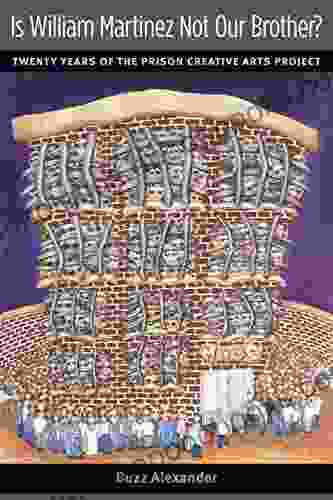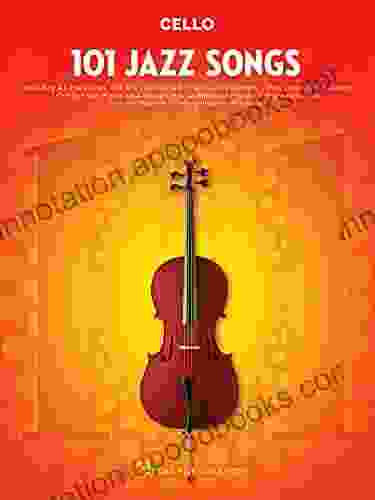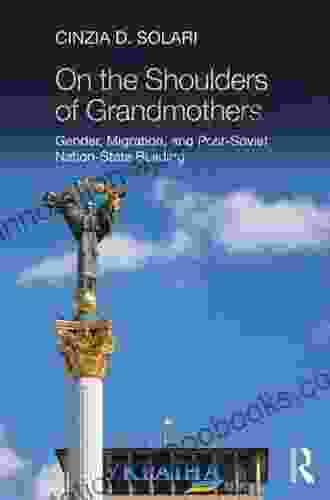Twenty Years of the Prison Creative Arts Project: The New Public Scholarship

5 out of 5
| Language | : | English |
| File size | : | 1636 KB |
| Text-to-Speech | : | Enabled |
| Screen Reader | : | Supported |
| Enhanced typesetting | : | Enabled |
| Word Wise | : | Enabled |
| Print length | : | 427 pages |
The Prison Creative Arts Project (PCAP) is a groundbreaking initiative that has transformed the lives of incarcerated individuals through the power of art. For two decades, PCAP has been providing incarcerated people with access to high-quality arts education, offering them opportunities for self-expression, creativity, and personal growth.
This article delves into the history, impact, and transformative power of the PCAP, providing a unique glimpse into the intersection of art, education, and social justice. We explore the project's origins, its innovative approach to education, and the remarkable achievements of its participants.
The Origins of PCAP
PCAP was founded in 1999 by a group of artists, educators, and activists who were deeply concerned about the lack of access to arts education in prisons. They believed that art had the potential to be a powerful tool for rehabilitation, offering incarcerated individuals opportunities for self-expression, emotional healing, and personal growth.
With the support of the California Arts Council and the California Department of Corrections, PCAP launched its first program at San Quentin State Prison. The program was an immediate success, with incarcerated participants eagerly embracing the opportunity to engage with art. The success of the San Quentin program led to the expansion of PCAP to other prisons throughout California and beyond.
PCAP's Innovative Approach to Education
PCAP's approach to education is unique and innovative, centering around the belief that art is a powerful tool for transformation. The project's programs are designed to provide incarcerated individuals with opportunities to develop their artistic skills, express themselves creatively, and connect with their own humanity.
PCAP offers a wide range of art classes, including painting, drawing, sculpture, music, theater, and writing. These classes are taught by professional artists who are committed to creating a supportive and encouraging learning environment. Incarcerated participants are given the time and space to explore their creativity, experiment with different mediums, and develop their artistic voices.
In addition to art classes, PCAP also offers workshops and seminars on topics such as art history, art theory, and the role of art in social change. These workshops provide incarcerated participants with a deeper understanding of art and its potential to impact the world.
The Transformative Power of PCAP
The impact of PCAP on the lives of incarcerated individuals has been profound. Through art, incarcerated participants have found ways to express themselves, heal from trauma, and connect with their own humanity. Art has also provided them with a sense of purpose, hope, and the belief that they can make a positive contribution to society.
Numerous studies have documented the benefits of arts education in prison settings. These studies have shown that art programs can reduce recidivism, improve mental health, and increase self-esteem. Art has also been shown to foster empathy, compassion, and a sense of community among incarcerated individuals.
PCAP's Legacy and Future
Over the past two decades, PCAP has become a recognized leader in the field of arts education in prison. The project has received numerous awards and accolades for its innovative approach and its commitment to providing incarcerated individuals with access to high-quality arts education.
PCAP's legacy is one of hope, transformation, and social change. The project has demonstrated the power of art to break down barriers, heal wounds, and inspire incarcerated individuals to reach their full potential. As PCAP enters its third decade, it remains committed to providing incarcerated individuals with opportunities for artistic expression, personal growth, and social change.
The Prison Creative Arts Project is a shining example of the transformative power of art. For two decades, PCAP has been providing incarcerated individuals with access to high-quality arts education, offering them opportunities for self-expression, creativity, and personal growth. Through art, incarcerated participants have found ways to heal from trauma, connect with their own humanity, and envision a better future for themselves.
PCAP's legacy is one of hope, transformation, and social change. The project has demonstrated the power of art to break down barriers, heal wounds, and inspire incarcerated individuals to reach their full potential. As PCAP enters its third decade, it remains committed to providing incarcerated
5 out of 5
| Language | : | English |
| File size | : | 1636 KB |
| Text-to-Speech | : | Enabled |
| Screen Reader | : | Supported |
| Enhanced typesetting | : | Enabled |
| Word Wise | : | Enabled |
| Print length | : | 427 pages |
Do you want to contribute by writing guest posts on this blog?
Please contact us and send us a resume of previous articles that you have written.
 Book
Book Novel
Novel Page
Page Chapter
Chapter Text
Text Story
Story Genre
Genre Reader
Reader Library
Library Paperback
Paperback E-book
E-book Magazine
Magazine Newspaper
Newspaper Paragraph
Paragraph Sentence
Sentence Bookmark
Bookmark Shelf
Shelf Glossary
Glossary Bibliography
Bibliography Foreword
Foreword Preface
Preface Synopsis
Synopsis Annotation
Annotation Footnote
Footnote Manuscript
Manuscript Scroll
Scroll Codex
Codex Tome
Tome Bestseller
Bestseller Classics
Classics Library card
Library card Narrative
Narrative Biography
Biography Autobiography
Autobiography Memoir
Memoir Reference
Reference Encyclopedia
Encyclopedia Ian F Svenonius
Ian F Svenonius Richard Knott
Richard Knott Chinua Achebe
Chinua Achebe Christopher Poindexter
Christopher Poindexter Elena Armas
Elena Armas Christine Overall
Christine Overall Christy Leos
Christy Leos Jesse Stone
Jesse Stone Kyle Bravo
Kyle Bravo Ian Morgan Cron
Ian Morgan Cron Chris Crompton
Chris Crompton Christopher Lazarski
Christopher Lazarski Cinzia D Solari
Cinzia D Solari Oakley Manning
Oakley Manning Thane Rosenbaum
Thane Rosenbaum Chris Glatte
Chris Glatte Chelsea Taylor
Chelsea Taylor Thomas D Morris
Thomas D Morris Christopher Jargodzki
Christopher Jargodzki Christina L Davis
Christina L Davis
Light bulbAdvertise smarter! Our strategic ad space ensures maximum exposure. Reserve your spot today!
 Robert Louis StevensonFollow ·17.2k
Robert Louis StevensonFollow ·17.2k Timothy WardFollow ·4.6k
Timothy WardFollow ·4.6k Kendall WardFollow ·19.6k
Kendall WardFollow ·19.6k Bryan GrayFollow ·12k
Bryan GrayFollow ·12k Dale MitchellFollow ·7.9k
Dale MitchellFollow ·7.9k Henry David ThoreauFollow ·3.2k
Henry David ThoreauFollow ·3.2k Hector BlairFollow ·9.1k
Hector BlairFollow ·9.1k Alexandre DumasFollow ·10.4k
Alexandre DumasFollow ·10.4k
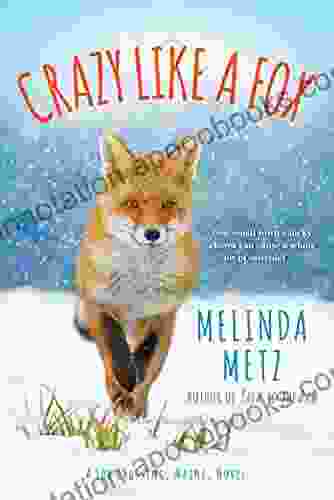
 Kevin Turner
Kevin TurnerDive into the Enchanting World of "Crazy Like Fox": A...
Prepare yourself for a literary adventure...
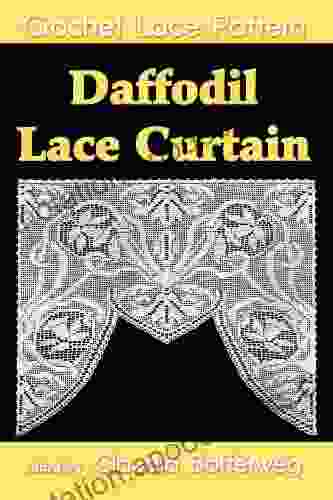
 Ralph Waldo Emerson
Ralph Waldo EmersonUnlock the Elegance of Daffodil Lace: An Immersive Guide...
: A Tapestry of Delicate...

 Gerald Parker
Gerald ParkerNever Lose An Argument Again: 20 Powerful Techniques From...
Are you tired of losing...
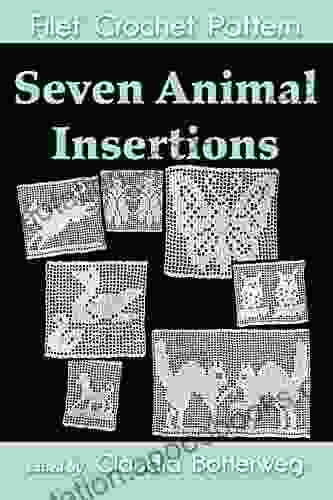
 Xavier Bell
Xavier BellSeven Animal Insertions Filet Crochet Pattern: Embark on...
Welcome to the captivating...

 Eugene Powell
Eugene PowellMagomago in TDS Magomago 12: An Unforgettable Adventure...
Step into the Enchanting World of...

 Marvin Hayes
Marvin HayesSoft Felting Needle Holder Excellence In Reborn Artistry
Unveiling the Secrets of the...
5 out of 5
| Language | : | English |
| File size | : | 1636 KB |
| Text-to-Speech | : | Enabled |
| Screen Reader | : | Supported |
| Enhanced typesetting | : | Enabled |
| Word Wise | : | Enabled |
| Print length | : | 427 pages |


